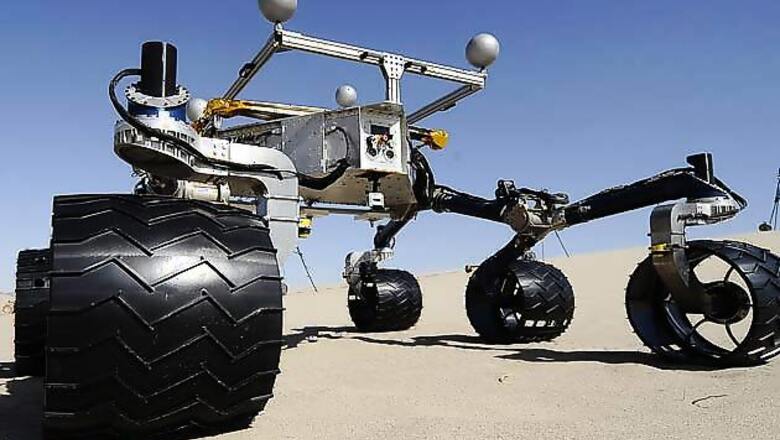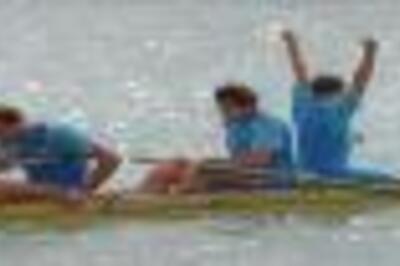
views
Washington: NASA's Curiosity rover has just drilled its first hole in the foothills of Mount Sharp, the 5-kilometre-high mountain on Mars that is the primary destination for the six-wheeled machine's mission.
The rover's hammering drill chewed about 2.6 inches deep into a basal-layer outcrop on Mount Sharp last week and collected a powdered-rock sample.
The powder collected by the drilling is temporarily held within the sample-handling mechanism on the rover's arm.
"This drilling target is at the lowest part of the base layer of the mountain, and from here we plan to examine the higher, younger layers exposed in the nearby hills," said Curiosity Deputy Project Scientist Ashwin Vasavada of NASA's Jet Propulsion Laboratory (JPL).
"This first look at rocks we believe to underlie Mount Sharp is exciting because it will begin to form a picture of the environment at the time the mountain formed, and what led to its growth," said Vasavada.
After landing on Mars in August 2012 but before beginning the drive towards Mount Sharp, Curiosity spent much of the mission's first year productively studying an area much closer to the landing site, but in the opposite direction.
The mission accomplished its science goals in that Yellowknife Bay area. Analysis of drilled rocks there disclosed an ancient lake-bed environment that, more than three billion years ago, offered ingredients and a chemical
energy gradient favourable for microbes, if any existed there.
From Yellowknife Bay to the base of Mount Sharp, Curiosity drove more than 8 kilometres in about 15 months, with pauses at a few science waypoints.
The emphasis in mission operations has now changed from drive, drive, drive to systematic layer-by-layer investigation, NASA said.
"We're putting on the brakes to study this amazing mountain. Curiosity flew hundreds of millions of miles to do this," said Curiosity Deputy Project Manager Jennifer Trosper of JPL.
Curiosity on September 19 arrived at an outcrop called "Pahrump Hills," which is a section of the mountain's basal geological unit, called the Murray formation.
Three days later, the rover completed a "mini-drill" procedure at the selected drilling target, "Confidence Hills," to assess the target rock's suitability for drilling.
A mini-drill activity last month determined that a rock slab under consideration then was not stable enough for full drilling, but Confidence Hills passed this test.
The rock is softer than any of the previous three targets where Curiosity has collected a drilled sample for analysis.




















Comments
0 comment